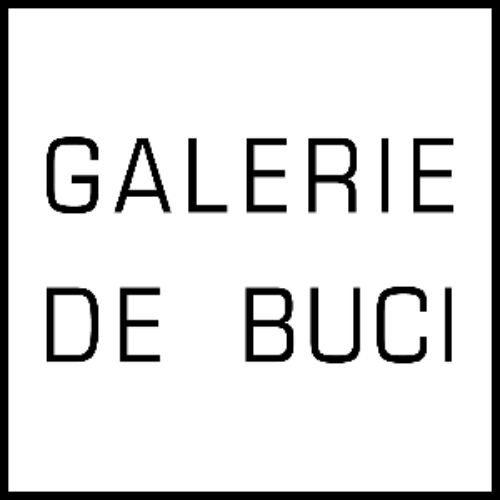Iceland Comes to Saint-Germain-des-Près
Exploring the artistic language of “Boreal Heat: Icelandic Art Today” at the Galerie de Buci
Installation view of the exhibition "Boreal Heat" at the Galerie de Buci
Photo: Galerie de Buci
With Boreal Heat: Icelandic Art Today, the Galerie de Buci brings the striking vision of three Icelandic artists—Reinar Foreman, Björk Viggósdóttir, and Ástríður Ólafsdóttir—to the heart of Paris. This article explores the distinct features and characteristics of their works, which offer a contemporary perspective on themes that have long shaped artistic expression.
From reinterpreted classical figures to the delicate tension between stillness and movement, the exhibition presents a dialogue between form and transformation. Whether through Foreman’s expressive mythological figures, Viggósdóttir’s restrained minimalism, or Ólafsdóttir’s intricate explorations of fabric and color, Boreal Heat highlights the evolving language of Icelandic contemporary art.
Gods and Humans
Reinar Foreman’s work bridges the gap between classical mythology and contemporary immediacy, reinterpreting Greco-Roman figures through a dynamic, sketch-like style. His paintings strip these mythological bodies of their rigid, statuesque permanence, reanimating them with bold, energetic strokes. Figures like Anchises, Aeneas, and Ascanius emerge not as untouchable relics but as fleeting impressions, their forms fragmented and transient, as if glimpsed in motion. The influence of Bernini is unmistakable, yet Foreman’s treatment softens the grandeur of these sculptures, making them more fluid, more human. His approach, reminiscent of Francis Bacon’s expressive distortions, dissolves the sculptural weight of his subjects, capturing them instead in the brief instant of perception. Through this interplay of presence and absence, immutability and ephemerality, Foreman’s art places classical mythology within a contemporary visual language, where the past is never fully static and memory remains in constant flux.

Reinar Foreman, Apollo and Daphne, 2024
Photo: Galerie de Buci
Photo: Galerie de Buci
Pictural Simplicity
Björk Viggósdóttir’s work embraces minimalism as a means of exploring balance and presence. Her compositions reduce form to its essence, engaging in a quiet dialogue between emptiness and fullness. Influenced by Taoist principles, she treats space not as a void but as an active element, allowing her restrained gestures to resonate more profoundly. On delicate rice paper, a single point of blue light becomes the anchor of the composition—a subtle yet powerful force that maintains equilibrium. This controlled simplicity invites contemplation, emphasizing how the absence of excess can heighten meaning. In Viggósdóttir’s hands, minimalism is not about reduction for its own sake, but about revealing the fragile relationships between form, space, and perception.

Björk Viggósdóttir, Infinite randomness V, XIII, 2024
Photo: Galerie de Buci
Photo: Galerie de Buci
Fluid Material States
In her series Infinite Randomness, Björk Viggósdóttir challenges the perception of stability by introducing movement into what is inherently rigid. Porcelain pebbles, typically symbols of permanence, are bent and manipulated by delicate blue and red threads, disrupting their static nature. This tension between hardness and flexibility mirrors the way blood circulation gives life to the human body, animating what would otherwise be inert. The transformation is subtle yet profound—a simple intervention that shifts the viewer’s understanding of materiality. The altered stones suggest familiar shapes, evoking fallen bodies or unseen presences embedded within the fixed material. By making the immobile appear supple and unpredictable, Viggósdóttir blurs the line between the organic and the inanimate, revealing the fluid potential hidden within solidity.

Björk Viggósdóttir, Infinite randomness II, VIII, 2024
Photo: Galerie de Buci
Photo: Galerie de Buci
Dreamy Draperies
Ástríður Ólafsdóttir uses drapery not as a means of concealment, but as a tool for revelation. Adapting the techniques of Italian masters, she transforms dark, flowing fabrics into sculptural forms that define and obscure the human body at once. In her paintings, each fold, crease, and shadow gives volume to figures that remain unseen, allowing fabric to become an extension of the body rather than a covering. The interaction between textile and form creates an intimate yet enigmatic presence, where identity is both suggested and withheld. Within an otherwise abstract pictorial space, these veiled figures serve as the only tangible elements, anchoring the composition while resisting full definition. The tension between precision and ambiguity in her brushwork recalls classical drapery studies but reinvents them in a contemporary context, making the fabric not just a subject, but an active participant in shaping the body’s presence in space.

Ástríður Jósefína Ólafsdóttir, Inner land-escape I, 2024
Photo: Galerie de Buci
Photo: Galerie de Buci
Monochrome Abstraction
In her Magnet series, Ástríður Ólafsdóttir distills movement and emotion into subtle variations of a single color, using monochrome as a means of intensifying expression. Through drapery alone, she conveys states of being—bodies weighed down in apathy and melancholy, others caught in a struggle that suggests resilience and resistance. The absence of distinct figures heightens the impact of the fabric’s shifting forms, making the folds and contours the only visible traces of an unseen presence. The use of closely related shades within the same color spectrum creates a sense of continuity, as if these forces exist in a suspended moment rather than a fixed state. This monochromatic approach strips the image of distractions, allowing the viewer to focus entirely on the tension between stillness and motion, fragility and persistence. In the end, what remains is not the body itself, but the imprint of its energy—an echo of existence captured in paint.

Ástríður Jósefína Ólafsdóttir, Magnet VI, 2024
Photo: Galerie de Buci
Photo: Galerie de Buci
Boreal Heat offers a rare opportunity to experience the depth and diversity of contemporary Icelandic art in Paris. Through mythology, material experimentation, and abstraction, the exhibition showcases a dynamic interplay between presence and absence, movement and stillness. Each work invites the viewer to engage with form in new ways, challenging perception and interpretation. To fully appreciate the nuances of these pieces, visit the Galerie de Buci and step into the world these artists have created—where past and present, solidity and fluidity, all merge into a striking visual dialogue.

